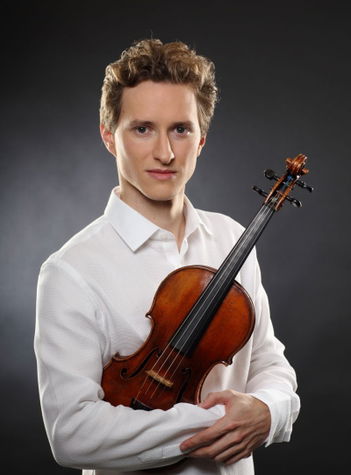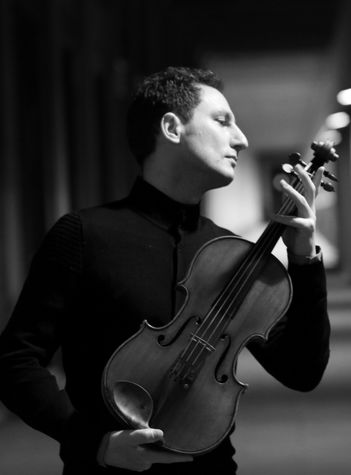“My mission is to make audiences love the viola just as much as I do,” says Antoine Tamestit, who has conveyed this passion of his to music fans all around the world. Performing as a soloist and chamber player, the Paris native’s repertoire ranges from Baroque to contemporary. Such distinguished composers as Jörg Widmann, Thierry Escaich, Bruno Mantovani and others have written works for him.
Antoine Tamestit’s first instrument was the violin, yet at the age of nine he was so mesmerised by J. S. Bach’s Suites for Solo Cello that he felt the urge to master a lower-range instrument. He therefore cursorily acquainted himself with the cello, but was not overly excited. When, however, he found out that the Suites can also be played on the viola, he did not hesitate and fully embraced the instrument. Love at first sight would grow into a lifelong bond. Taking lessons from Jean Sulem, Jesse Levine and Tabea Zimmermann, he soon won a number of coveted prizes (William Primrose Competition, ARD-Musikwettbewerb, etc.). Tamestit would perform on stages worldwide along with renowned orchestras (Berliner Philharmoniker, Koninklijk Concertgebouworkest, Tonhalle-Orchester Zürich, Orchestra dell’Academia Nazionale di Santa Cecilia, New York Philharmonic, etc.) and conductors (Sir John Eliot Gardiner, Sir Simon Rattle, Daniel Harding, Paavo Järvi, etc.).
Owing to his impeccable technique and rich tone, Tamestit has gained international fame. He plays the first viola ever built by Antonio Stradivari (1672), provided to him by the Stradivari-Stiftung Habisreutinger. “We have lived through a lot, and yet we continue to get to know each other. Initially, it was not easy. I think there are two personalities on stage. But today it is a symbiotic relationship. We constitute a single entity, helping each other to express ourselves,” Tamestit said in an interview within the Prague Spring festival, where in 2023 he held the post of artist-in-residence. He has collaborated with the Czech Philharmonic over the long term. One of the works they have performed together, in Prague and within a tour of Central Europe (with the late Jiří Bělohlávek), is Bohuslav Martinů’s Rhapsody, Tamestit’s favourite piece, which he has referred to as “beautiful, moving and ravishing”.
He has devoted to chamber music too, regularly working with the pianist Emanuel Ax, the violinist Isabelle Faust and the clarinettist Martin Fröst. He is a member of Trio Zimmermann, whose recordings have received worldwide critical acclaim (highly lauded has been their 2019 album of J. S. Bach’s Goldberg Variations, as arranged by Tamestit). Moreover, he is a splendid soloist. He premiered Jörg Widmann’s Viola Concerto, a recording of which has received the prestigious Premier BBC Music Magazine Award.
Antoine Tamestit is also a sought-after educator, teaching at the Hochschule für Musik und Tanz in Cologne and the Conservatoire national supérieur de musique et de danse de Paris, as well as within the Kronberg Academy masterclasses. For over a decade, he has been artistic director of Japan’s Viola Space festival.





